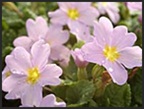
This is a tale, familiar to gardeners everywhere, of PLANT LUST.
We all know it, read how this one came about!
I garden. I am not a gardener as such, more of a plant person. The difference is immense. Gardeners work on gardens, making the garden the prime objective. A gardener’s flower beds look nice. A plant person’s yard looks as if a mole had been hard at work.
Plant people work with plants. We read about a plant, see a plant, want the plant, get the plant, and work with it to insure its survival. We move the plant- 10″ to the left for a bit more sun, 2 yards down near the roots of a tree for a bit less moisture. We have gardens that have tags all over the place, marking plants that were planted, hoping they will survive the winter, or to remind us that we did plant something there, years ago, hoping that a seed or root will resprout. As someone said: “Your garden looks like a graveyard”. It is enough to make a true gardener shudder.
We will dig things up to move them, and put them where they think they will survive, marking the area around them with spray paint so the idiot lawn mower does not mow them over or weed whack them to death.
This is the tale of a recent case in point of PLANT LUST.
Gardener’s do not seem to get this. While they want the garden to look nice throughout a growing season, they do not seem to go nuts. Plant people do.
Plant lust starts innocently. You are at a nursery.. you see a plant you have never seen before. You immediately see a swath of that plant across your yard. You look down at your over-loaded wagon, knowing your husband is watching, and you either clutch the plant to you, or with trembling hands put it down, while trying to figure out which of the plants you already have picked up can be discarded. Plant lust is not an emotion that can be dismissed lightly. Plant people go to great lengths to get their plants!
It becomes a quest. The obsession is one only another plant person understands.
The tale of Primula vulgaris ssp. sibthorpii started innocently enough.
I grow Primula vulgaris. I like it, I love it, anyone in the north should grow it.. No hybrid has anything on this species. It is the earliest perennial to bloom here. In early March, whether there is snow or not, the evergreen leaves are rather tattered and ratty looking. And then the buds start to appear. They are a soft yellow, and they keep on coming for six to eight weeks. They will completely cover the plant! To keep this from being boring plant spring bulbs behind it, and you will get a lovely spring memory!
When the flowers fade the leaves green up, elongate, and the plants look like large lettuces.
Tired of hostas? Plant Primula vulgaris! Down in the lower meadow they are swamped by grasses all summer. Up higher they are on a rocky hill where they are in not-so-nice rocky soil. On another slope they get too much sun for about 2 weeks in late July. They do not care. They adapt! They are easy, and rewarding- just don’t bake them and you will be rewarded! Ours are not fed, not watered, just left to be.
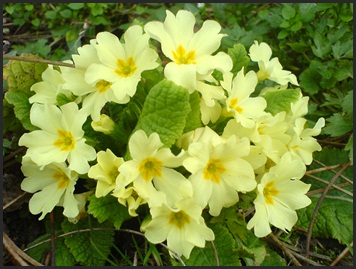
PRIMULAS VULGARIS
Back to the tale of PLANT LUST…
Somehow this year I happened upon a statement that there were color varieties of Primula vulgaris. WHAT? I could have this in other colors? As it turns out, yes.. the most common is a pink variety… Primula vulgaris subspecie sibthorpii … There are pinks and there are pinks.. especially in the world of primroses… but the pictures I saw showed a pleasant pink, slightly on the blue side, soft, pretty, but not sugary. PLANT LUST STRUCK… I immediately saw swaths of yellow mixed with pink… I envisioned an early spring flowering of them. And that was it… PLANT LUST had struck.
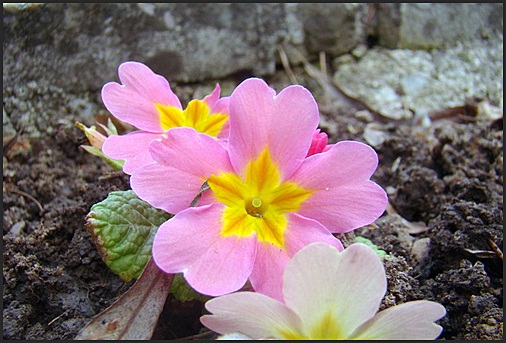
PRIMULA VULGARIS ssp.SIBTHORPII
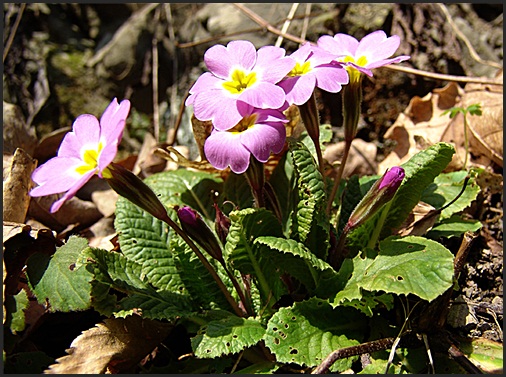
PRIMULAS VULGARIS ssp. SIBTHORPII
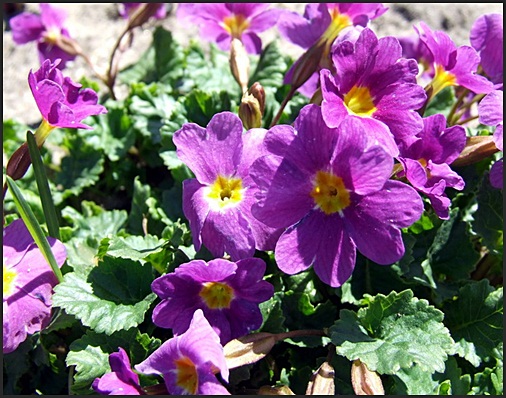
PRIMULA VULGARIS ssp. SIBTHORPII
darker form
Today, on the net, one can find anything. And Primula vulagaris ssp sibthorpii is no exception. This is an easy plant to find in Europe, and in Great Britain easy to obtain. BUT, it is not so easy to find in the USA. Oh, there are references. There are pictures on blogs. But, no one seems to have seeds, much less a plant! I wrote people, both in the US and in Europe. Most did not even get back to me. One nursery man said… “Did you Google it?” When I said “Yes”- mentally thinking “you think?”, he shot back with”Bummer”. Not what I wanted to hear.
People with plant lust do not give up. We just become more obsessed with finding the plant. I wrote people who had the plants in Europe, and while most did not write back, a few did. A very nice lady from seedaholic.com wrote me to try the SRGC, as did a kind lady from Kevock Gardens in the UK. I wrote the Scottish Rock Garden Club and another kind lady said she would put my request up on a message board. And she sent me to Hill View Rare Plants in Tasmania. They did have seed! At this point the president of the American Primrose Society also wrote that Jelitto Seeds in Germany had them. As they had a US office, which would facilitate importation of the seeds, I decided to order from them. Plus, they had both the white and the blue color forms of Primula vulgaris! (So exciting!)
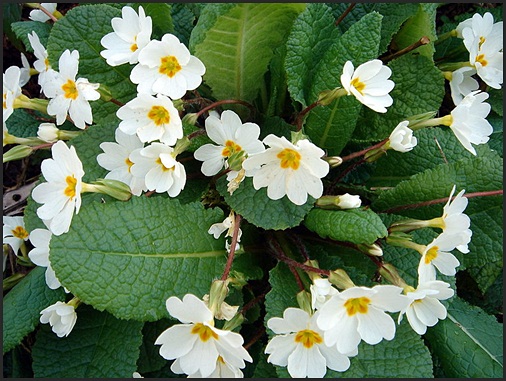
PRIMULA VULGARIS WHITE FORM
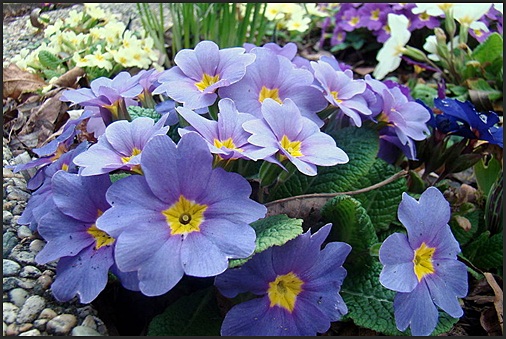
PRIMULA VULGARIS BLUE FORM
As I put in my order with them, a sigh of happiness escaped me. Though flowering plants are two years away, the first part of the quest for finding the seeds is over! We will keep you updated on things!
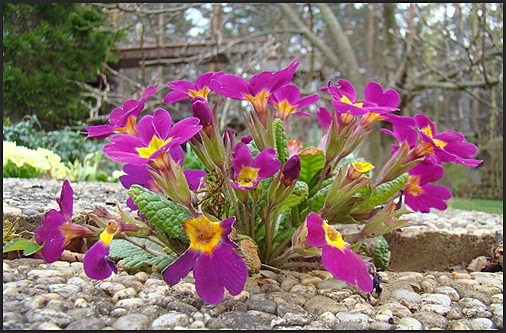
PRIMULA VULGARIS ssp SIBTHORPII
dark form
SEED UPDATE!
The seeds from Jelitto have arrived!
So excited!
While I would love to rush out and start seeding flats
I am waiting.
Fall is nearly here
and with it comes a partial fall clean-up.
The sound of the dreaded leaf blower will be heard.
Which means seeds get blown everywhere.
As these will need to be chilled,
I am waiting until after the clean-up, so they will be safe from blowers and large feet!
DECEMBER, 2011 UPDATE
Last summer, when thanking people for helping me find the seeds for the Primula vulgaris ssp sibthorpii, I received an email from the secretary of the APS, the American Primrose Society, asking if they could publish this article in their quarterly publication. I said yes.
Imagine my surprise, when right before Christmas, the fall edition arrived… with the article! I have to say, I was thrilled they included it! My grandfather, who grew primula, would have been pleased!
So, I just want to say “thankyou” to the American Primrose Society for including me!
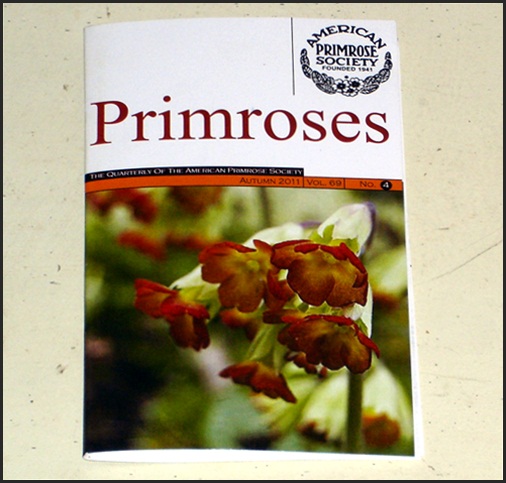
THE AMERICAN PRIMROSE SOCIETY
Fall, 2011 Quarterly
———————
The pictures above have been used with permission of the photographers.
The Primula vulgaris ssp sibthorpii pale pink forms, the Primula vulgaris blue form, and the last Primula vulgaris ssp sibthorpii deep form are by Lukas Kaffer.
The first Primula vulgaris ssp. dark form is by: Tomas Čekanavičius
The other pictures are from Wiki Commons.
I would like to thank the people who have helped me on this plant quest…They took time and energy to help me, the plant world is a wonderful global community! See these interesting plant places and resources:
http://www.seedaholic.com/
http://www.kevockgarden.co.uk
http://www.srgc.org.uk/
http://americanprimrosesociety.org/index.php
https://www.jelitto.com/english.html
http://deeprootplantbase.com/index.html
_________________________
April 2013 Update
One thing that is interesting about what I do is the people I meet. Early in the year Jan, from Michigan, bought some of the green primrose fabric.

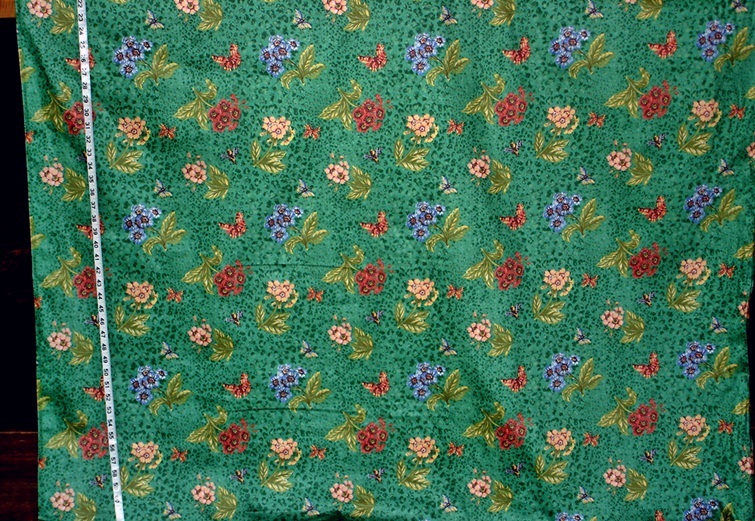
GREEN PRIMROSE FABRIC
This fabric features primroses, large bees and butterflies on a unique very green background. It is one of the few fabrics we have had that has primroses, and the only one that has just primroses.
She wrote me she loved primroses, and was doing a quilt with primroses, and that she would be sprinkling the fabric throughout the quilt. I said she should read this article, which she did. She also had tried to grow Primula vulgaris ssb.sibthorpii, without success. She had planted seeds, and not one had germinated.
She sent pictures of what she was doing with primroses!
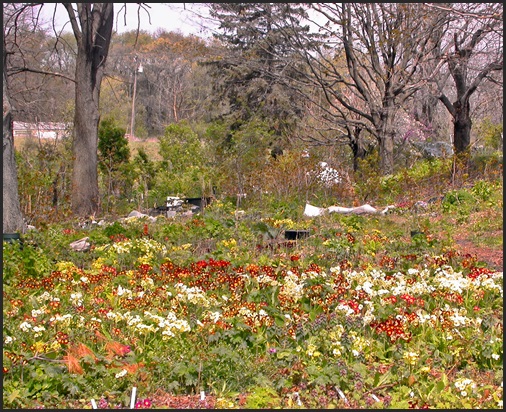
Jan’ is replacing her lawn with primroses!
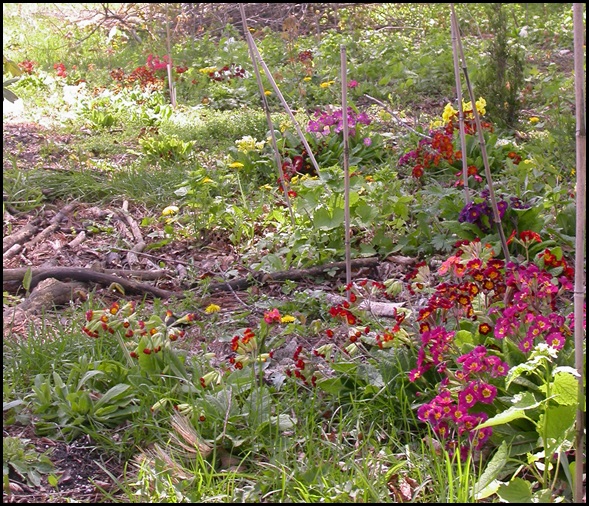
They are beautiful!
In late March I heard from Jan again. She had gone into a cooler at the Plant Biology Department, Michigan State University, where she works. And there, left over from the previous spring, was her pot of Primula vulgaris ssb. sibthorpii- and every seed was up! As the cooler was unlit it was serendipitous that she found them!
She said that her obsession with P. vulgaris ssp. sibthorpii was long standing, and she felt as if she had won the lottery!
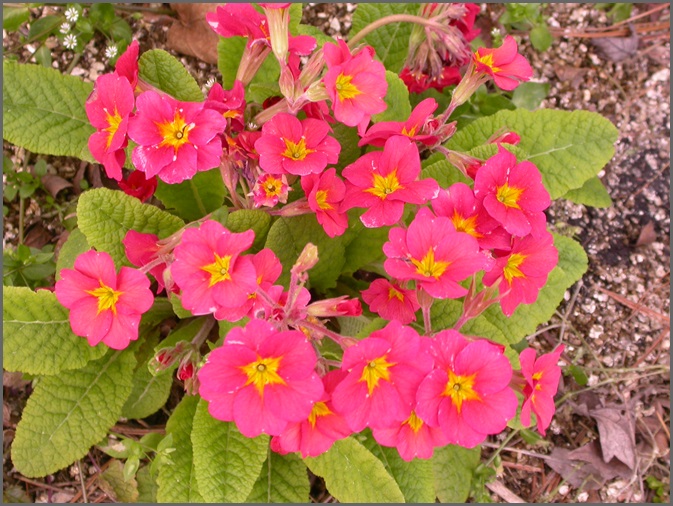
I planted seeds of the P. vulgaris sibthorpii last year. None germinated for me either… I am hoping that mine, like Jan’s, will do so this year.
In the meantime though, my Primula vulgaris are up and in full bloom, one week after a sleet and snow storm… you have to love them, no matter what the form!
__________________________________________
April, 2016 Update
Down in the open field the Primula vulgaris are in bloom!
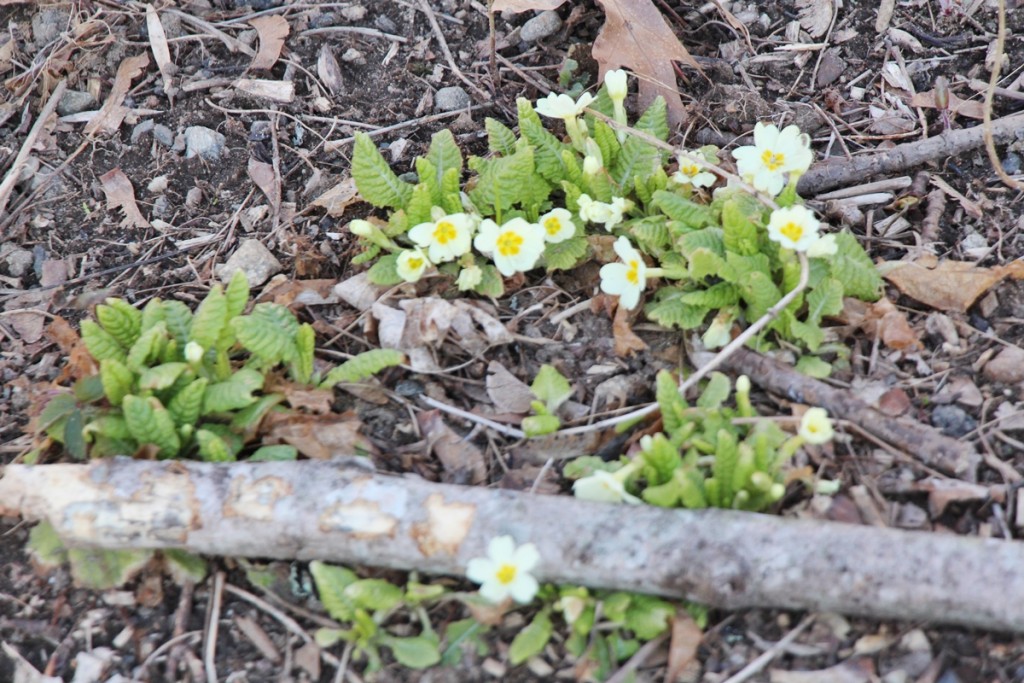
I am always astounded at how these plants appear, old leaves weathered by the winter.
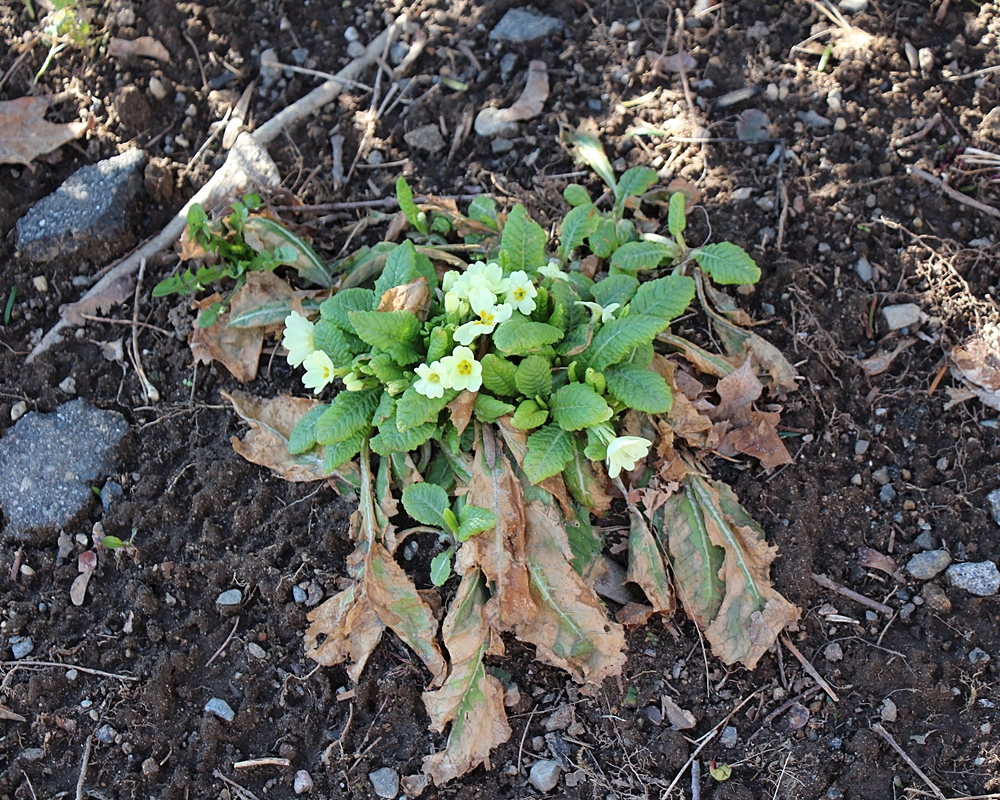
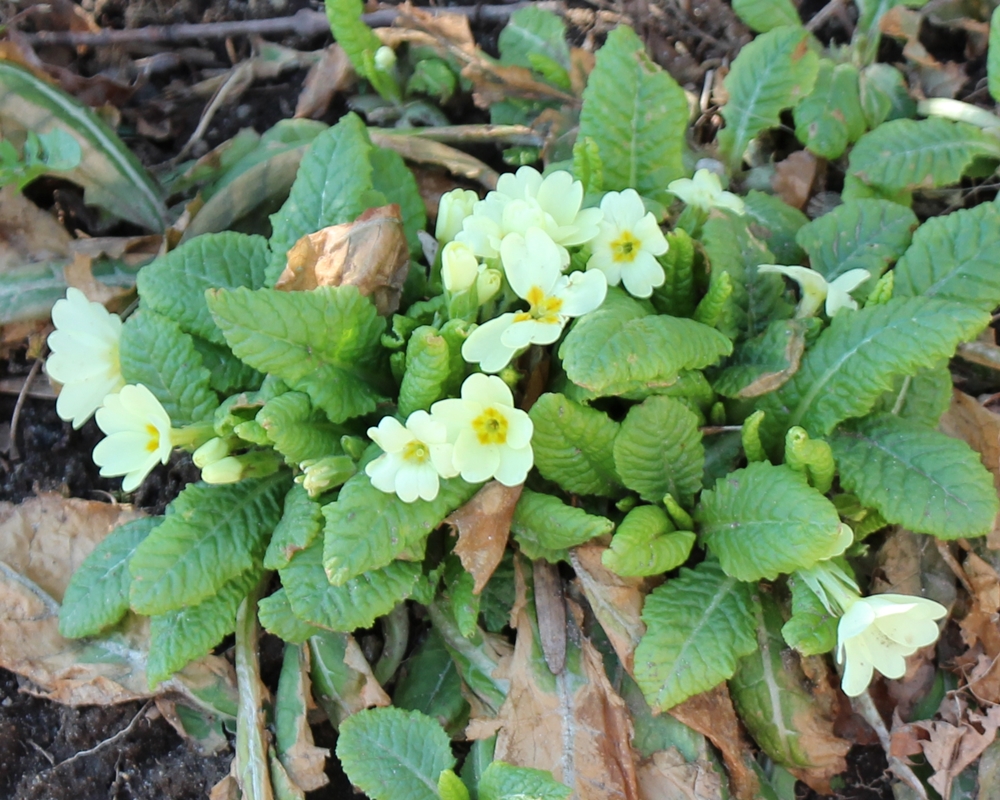
I decided to go and check on my four very small Primula vulgaris ssb. sibthorpii…
They had bloomed!!!
Jan had sent 18 plants late in the year of 2013. Planted as late as they were, only four survived. And none have done very well. But, this year two, though small, have flowered!
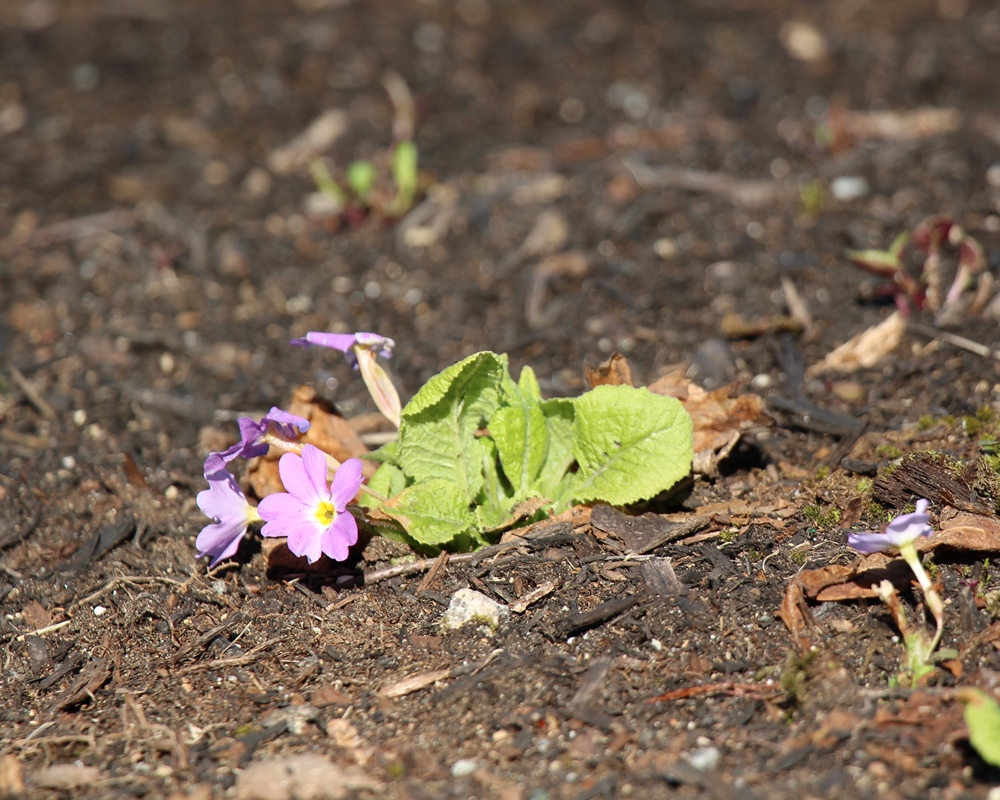
This is why gardeners garden- such a small thing is such a large sign of hope, for the future! It was worth the wait!
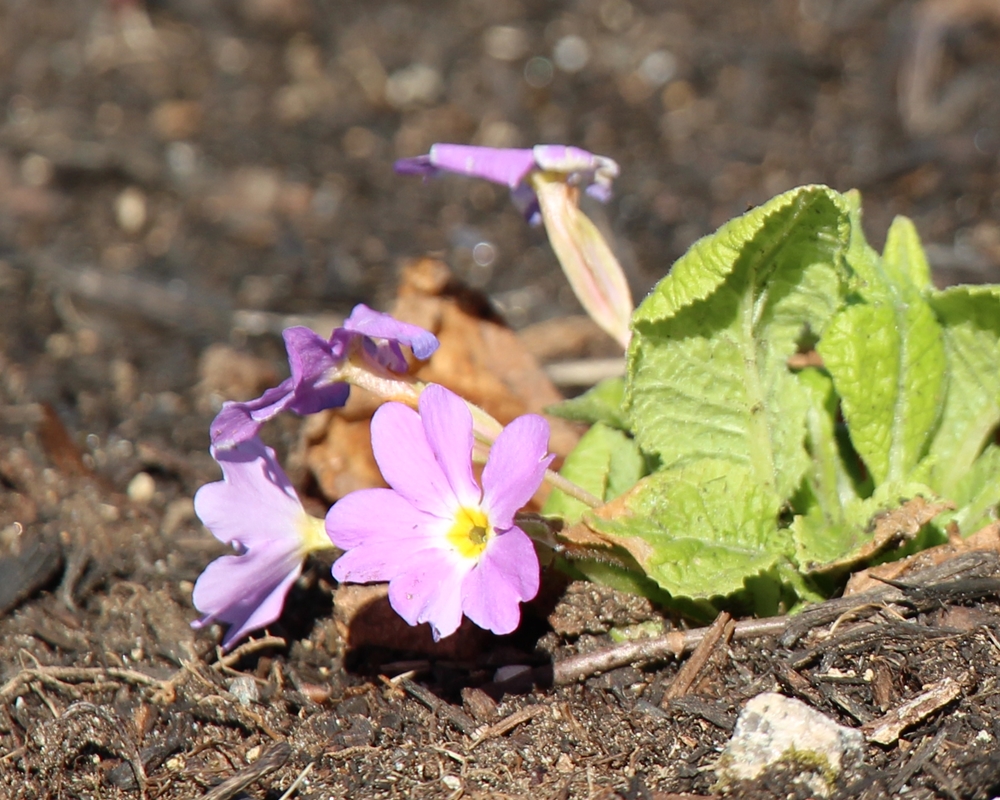
This spring I will be moving them to a different part of the garden, may be two of them down to the open field, in hopes that they will do better there! And who knows? Perhaps they will hybridize with the straight species and develop other colors!
I will keep you posted!
_______________________________________
